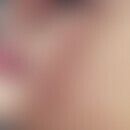Synonym(e)
Definition
Vanillin, auch Vanillinum saccharatum, ein Benzaldehyd mit der Summenformel C8H8O3, ist der Monomethylether des Protocatecualdehyd
Die aromatisch nach Vanille riechende Substanz ist löslich in heißem Wasser, sehr leicht löslich in Ethanol und Ether. Früher wurde Vanillin aus der Frucht der Echten Vanille (Vanilla planiflora) gewonnen, danach halbsysnthetisch aus Coniferin und derzeit synthetisch aus Eugenol oder Guajakol (Gallage NJ et al. 2015; Kundu A 2017).
Wirkungen
Vanillin wird als Aromatikum und Gewürz genutzt. Vanillezucker soll mindestens 1% Vanillin enthalten. Sowohl Vanillin als auch Vanillinsäure besitzen antimikrobielle Eigenschaften. Der Substanz werden antioxidative und antikanzerogene Effekte zugeschrieben (Bezerra DP et al. 2016). Weiterhin hemmt Vanillin und Vanillinsäure das Wachstum von Proteus mirabilis.
LiteraturFür Zugriff auf PubMed Studien mit nur einem Klick empfehlen wir  Kopernio
Kopernio
 Kopernio
Kopernio- Bezerra DP et al. (2016) Overview of the Role of Vanillin on Redox Status and Cancer Development. Oxid Med Cell Longev 9734816.
- Gallage NJ et al. (2015) Vanillin-bioconversion and bioengineering of the most popular plant flavor and its de novo biosynthesis in the vanilla orchid. Mol Plant 8:40-57.
- Kundu A (2017) Vanillin biosynthetic pathways in plants. Planta 245:1069-1078.




